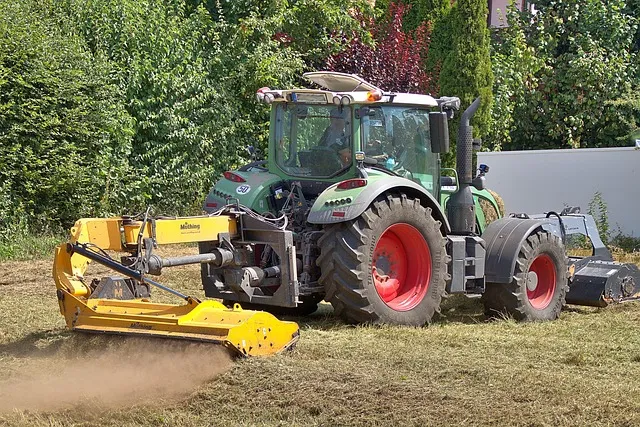When it comes to maintaining large areas of land, such as farms, orchards, or overgrown fields, a flail mower can be an invaluable tool. Unlike traditional rotary mowers, flail mowers use a series of small blades (or “flails”) attached to a rotating drum to cut grass, weeds, and even small branches with precision and efficiency. However, with so many options available on the market, selecting the right flail mower can feel overwhelming. In this guide, we’ll walk you through the key factors to consider when choosing a flail mower to ensure you make an informed decision that suits your specific needs.
1. Understand Your Land and Purpose
The first step in choosing a flail mower is to assess the type of terrain and vegetation you’ll be working with. Are you mowing flat lawns, uneven pastures, or thick brush? Flail mowers come in various designs tailored to different tasks:
- Light-duty flail mowers: Ideal for grass and light weeds on relatively flat surfaces.
- Heavy-duty flail mowers: Built for tougher jobs like cutting thick brush, saplings, or overgrown fields.
- Mulching flail mowers: Perfect if you want to finely chop clippings for natural mulch.
Consider the size of your land as well. For small properties, a compact model might suffice, while larger areas may require a wider cutting width to save time and effort.
2. Match the Mower to Your Tractor
Flail mowers are typically powered by a tractor’s PTO (power take-off) system, so compatibility is crucial. Check the following:
- Horsepower requirements: Ensure your tractor’s horsepower matches or exceeds the mower’s requirements. A mismatch can lead to poor performance or damage.
- PTO speed: Most flail mowers operate at 540 RPM, but some require 1000 RPM. Verify your tractor’s PTO speed.
- Three-point hitch category: Confirm the mower’s hitch (Category 1, 2, or 3) aligns with your tractor’s setup.
Choosing a flail mower that complements your tractor’s capabilities will ensure smooth operation and longevity.
3. Evaluate Cutting Width and Efficiency
The cutting width of a flail mower determines how much ground you can cover in a single pass, directly impacting your efficiency. However, the ideal width depends on the size of your property and the layout of your land.
A wider mower saves time on large, open areas, but it may be less practical for narrow spaces or areas with obstacles like trees and fences. Here’s a breakdown of cutting widths and their best use cases:
| Cutting Width | Best For | Pros | Cons |
|---|---|---|---|
| 4–6 feet | Small to medium properties | Easy to maneuver, fits tight spaces | Slower on large areas |
| 6–8 feet | Medium to large properties | Good balance of speed and control | May struggle with very narrow paths |
| 8–10 feet | Large-scale operations (farms, fields) | High efficiency, covers more ground | Less practical for obstacles or small lots |
When choosing, consider your land’s size and layout. For example, a 4- to 6-foot mower is ideal for a small homestead with tight corners, while an 8- to 10-foot model suits expansive fields. Balance coverage with maneuverability to find the right fit for your needs.
4. Blade Type and Durability
The blades on your flail mower do the heavy work, so choose wisely. Hammer blades are tough, cutting grass, weeds, and small branches with ease, making them solid for most farm jobs.
For finer grass, Y blades are lighter and gentler on your tractor, while heavy duty forged blades tackle thick brush or saplings. Go for hardened steel blades you can replace fast, and check with the manufacturer or dealer for spare parts to keep costs low.
5. Consider Adjustability and Features
Your flail mower should fit your land’s demands. Height adjustment lets you set the cut for short grass or tall weeds, and a rear roller keeps it even with a sharp finish, perfect for pastures or roadsides.
Side shift helps you mow around fences, trees, or ditches without sweat, and hydraulic offset makes dodging obstacles quick. A self leveling system steadies things on rough ground, and while these features add cost, they make every job easier.
6. Budget and Brand Reputation
Flail mowers cost plenty, so don’t skimp on quality. Set a budget that suits your farm, and stick to trusted brands like John Deere, Bush Hog, or Caroni that farmers rely on.
Check reviews online or talk to folks at the co op to find a dependable model. A good mower with a solid warranty might hit your pocket harder now, but it saves you from repair hassles later.
7. Maintenance and Safety
A flail mower needs some care to stay in shape. Pick one with easy grease points and blade access, and keep guards up since flails fling rocks fast.
Sharpen blades often, check the driveline to avoid breakdowns, and ensure a sturdy PTO shield for safety. A warranty helps if trouble hits, keeping you mowing instead of fixing.
Conclusion
Picking the right flail mower means knowing your land and what your tractor can handle. Focus on cutting width, blade type, adjustability, and durability to get a machine that works hard and lasts long.

